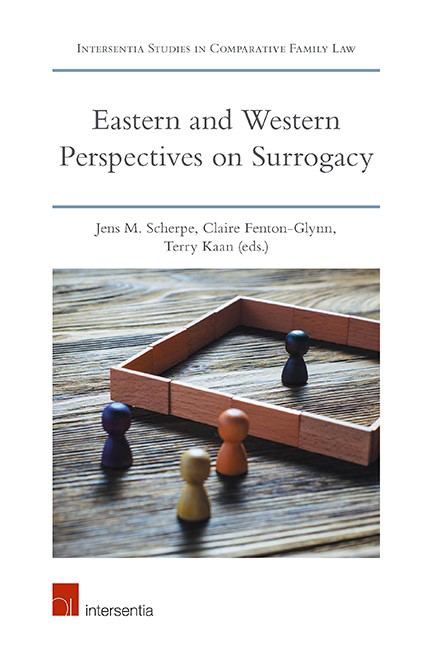Book contents
- Frontmatter
- Preface and Acknowledgements
- Contents
- List of Contributors
- Introduction
- Questionnaire
- PART I WESTERN PERSPECTIVES
- THE PROHIBITIVE APPROACH
- THE TOLERANT APPROACH
- THE REGULATORY APPROACH
- THE FREE MARKET APPROACH
- THE INFLUENCE OF INTERNATIONAL COURTS
- PART II EASTERN PERSPECTIVES
- THE PROHIBITIVE APPROACH
- A TOLERANT APPROACH?
- REGULATION THROUGH PROFESSIONAL MEDICAL BODIES
- FROM FREE MARKET TO REGULATION
- PART III COMPARATIVE PERSPECTIVES ON SURROGACY
- Index
- About the Editors
Questionnaire
Published online by Cambridge University Press: 26 June 2019
- Frontmatter
- Preface and Acknowledgements
- Contents
- List of Contributors
- Introduction
- Questionnaire
- PART I WESTERN PERSPECTIVES
- THE PROHIBITIVE APPROACH
- THE TOLERANT APPROACH
- THE REGULATORY APPROACH
- THE FREE MARKET APPROACH
- THE INFLUENCE OF INTERNATIONAL COURTS
- PART II EASTERN PERSPECTIVES
- THE PROHIBITIVE APPROACH
- A TOLERANT APPROACH?
- REGULATION THROUGH PROFESSIONAL MEDICAL BODIES
- FROM FREE MARKET TO REGULATION
- PART III COMPARATIVE PERSPECTIVES ON SURROGACY
- Index
- About the Editors
Summary
GENERAL LEGAL FRAMEWORK
1. Are there specific legal rules dealing with surrogacy in your jurisdiction (especially: is there a specific statute or merely an administrative/court practice)?
– Please provide information including the general constitutional/legal framework where appropriate.
– If there are no specific legal rules, is surrogacy nevertheless regulated through other mechanisms (e.g. medical boards/professional bodies)?
2. Is there a specialised authority set up to oversee surrogacy in your jurisdiction?
If so, please provide information concerning the role, and powers, of this authority.
3. What is the reasoning behind the law/rules on surrogacy (or lack thereof) in your jurisdiction?
Please describe the historic development leading up to the current law, and any significant legislative or judicial debates.
Please note if there is any distinction drawn between traditional and gestational surrogacy.
4. Please give statistical information (where available), concerning:
– (estimated) number of surrogate births in your jurisdiction;
– (estimated) number of surrogacy arrangements undertaken by citizens in another jurisdiction;
– number of clinics in which surrogacy can take place;
– any other relevant/interesting statistical information.
SURROGACY ARRANGEMENTS IN GENERAL
1. Are surrogacy contracts legal in your jurisdiction? Are they binding/ enforceable?
If so, please provide information concerning the terms that can, and cannot, be included.
2. Can a surrogate be remunerated for her participation in the surrogacy arrangement?
In particular:
– Are there guidelines concerning appropriate levels of payments? If so, who are they provided by?
– Are there any limits on payments?
– How are payments to the surrogate monitored?
Please provide any statistical information concerning payments made to surrogates in your jurisdiction.
LEGAL PARENTHOOD AT THE TIME OF BIRTH
1. Who are the legal parents of a child born through surrogacy at the time of birth?
How does this relate to the way in which your jurisdiction views parenthood in general, and motherhood in particular?
2. Will there be any indication on the birth certificate, or other document, that the child was born as a result of a surrogacy arrangement?
3. Is information concerning the surrogate – as the person who gave birth – preserved by the relevant authorities if she is not the legal mother of the child?
- Type
- Chapter
- Information
- Eastern and Western Perspectives on Surrogacy , pp. 7 - 12Publisher: IntersentiaPrint publication year: 2019

